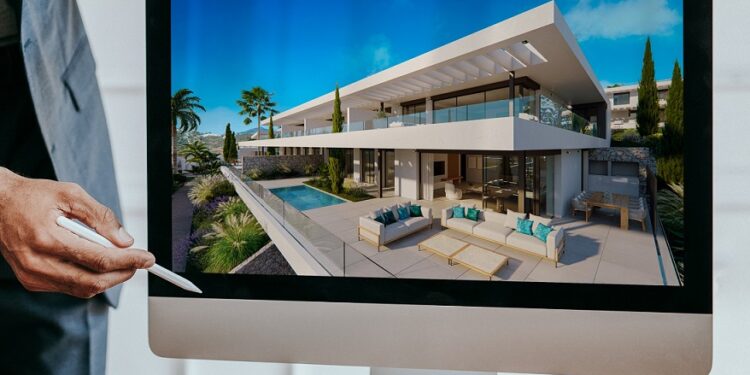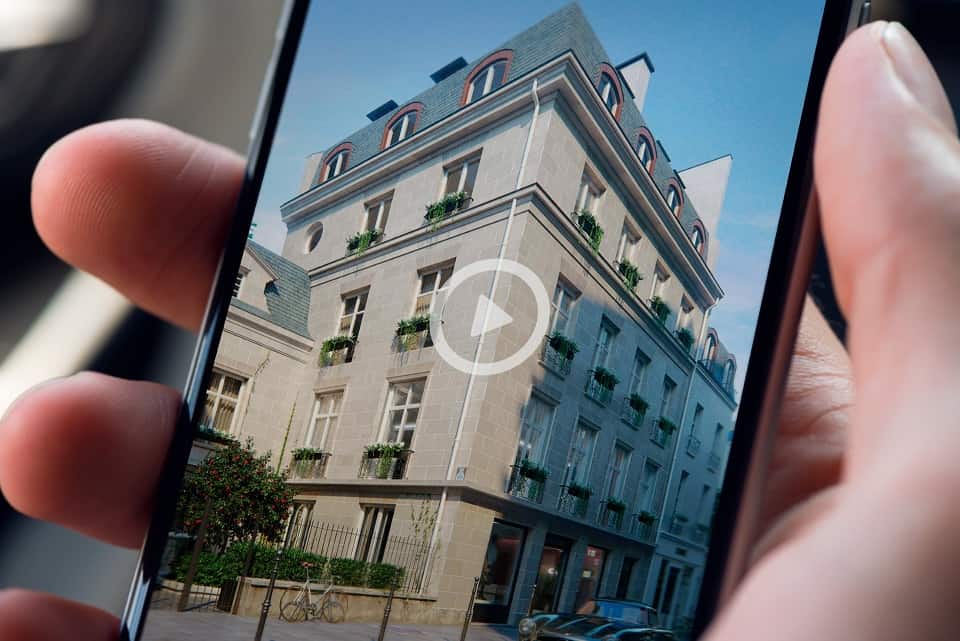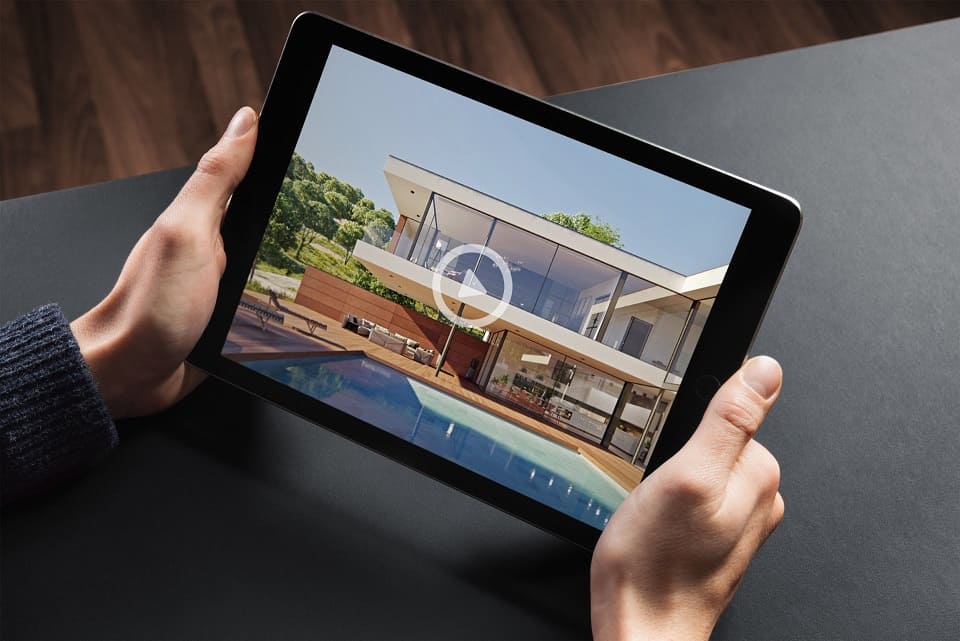3D animation in architecture is an effective way to evaluate the relationship between the property and the environment from different points of view.
While 3D renderings provide a specific perspective from a single image, architectural 3D animation services allow you to explore a project in full resolution with an immersive experience.
This feature of this technology makes 3D animation also an excellent tool from a marketing point of view, giving the opportunity to present your architectural project to clients in the best possible way.
Let’s take a closer look at what architectural 3D animation is and what are the main benefits this technology may offer.
What Is 3D Animation In Architecture?
Conceptually, it is a short film created using software (such as Autodesk Maya, 3D Interior, or 3D Max). The creation process involves combining 3D animation with architectural designs.
This approach provides the ability to visualize the space of the property in a three-dimensional environment, including additional elements such as landscape, interiors, people, vehicles, etc.
Compared to 3D rendering, which creates a three-dimensional image of a model, 3D animation is the combination of hundreds and thousands of still images to create a movie-like effect. In addition, specialists can add a computer environment around the structure to increase the photorealism of the project.
The importance of 3D animation in architecture is difficult to overestimate. This technology can be used by different specialists. For example, architects and constructors can benefit from displaying layouts and property designs. Landscape designers can use animations when working on outdoor gardens, parks, or other open spaces. For interior designers, this approach helps showcase potential interior features such as lighting, color combinations, furniture, and other decorative elements.
Benefits Of 3D Animation In Architecture
3D animation technology in architecture and design is a good investment in terms of time and money. The value of animation lies in the fact that with this approach, both architects and clients can benefit.
Here are the top 9 benefits you may enjoy with 3D architectural animation:
Adjust Your Project Effectively
Showcasing a 3D model of the property allows the client to act as a critic. This way, your clients can both see the size and shape of the building and get an idea of the property’s interior and exterior. So, if they want to change something, 3D animation provides that opportunity.
What’s more, it saves time and money. Your design becomes more accurate and error-free with architectural animation, as you can make adjustments when needed.
Sharing & Usability
3D animation can be created as a movie, making it easy to use and share. You can also include it in presentations to more effectively communicate project progress. Additionally, there is no need for clients to come into your office to view listings.
Post the architect animation on your website or social media to attract more attention. As a bonus, you can provide a copy of the 3D walkthrough.
Better Architectural Models
3D animation minimizes time and cost by eliminating the need to create a physical model immediately after receiving the task.
Once all changes have been made to the model, you can start working on it. This way, you save time and get exactly what the client wants.
Alternatively, you can create a 3D printable model. Simply provide the exact dimensions and scale, and the 3D printer will do the job. Printers are among the most effective ways to save time in construction due to realistic architectural models.
Boost Your Marketing Efforts
Architectural 3D tours are an effective way to promote your property. This approach helps potential clients determine the exact vision of the design to make a decision to purchase or invest in the project. The value of this strategy is that 3D tours allow you to demonstrate the features of the building, making your marketing more effective.
Increased Client Confidence
Since 3D animation allows architects and designers to demonstrate their vision now and in the future, this approach helps increase client confidence in the project.
The ability to evaluate a property in a virtual environment and then do the same in the real world once construction is completed is the best factor in making a purchasing decision and closing a deal.
Enhanced Property’s Layouts
When designing the building’s interior, there are many aspects to consider. With a 3D model, architects and interior designers can get to work. Designing the interior of a new building requires a lot. They can use the exact dimensions of the model as a reference and design the property accordingly. This will reduce the time required to complete the project. Therefore, this step will not only make you more competitive in the market but will also reduce the burden on the interior design team.
Visualization From Different Angles
2D floor plans may not be easily understandable enough for everyone. Thus, try to add 3D animation to your project to make it appear more realistic.
Architectural visualization techniques, such as 3D walkthroughs, layouts, bird’s eye renderings, virtual tours, and floor plans, are the best way to showcase the different parts of a project in the most realistic way. Using these practices, you can depict the interior and exterior details of any building and attract attention. In other words, they can convey the features of the project and the benefits it brings.
Showcase Your Project In Details
3D animation can provide a complete picture of the details of the project. With this approach, clients can be informed of what the property will look like after construction is completed.
Moreover, your clients can also get a realistic idea of the property’s features, including walls, roof, lighting, color palette, textures, etc.
Demonstrate The Scope & Scale Of The Project
3D architectural animation is a great way to demonstrate the exact measurements of height, depth, and room design. This gives the client a better idea of the scope and scale of your project.
In addition, if you need to make changes to the design of a room or object, designers can easily do this using a 3D model.








